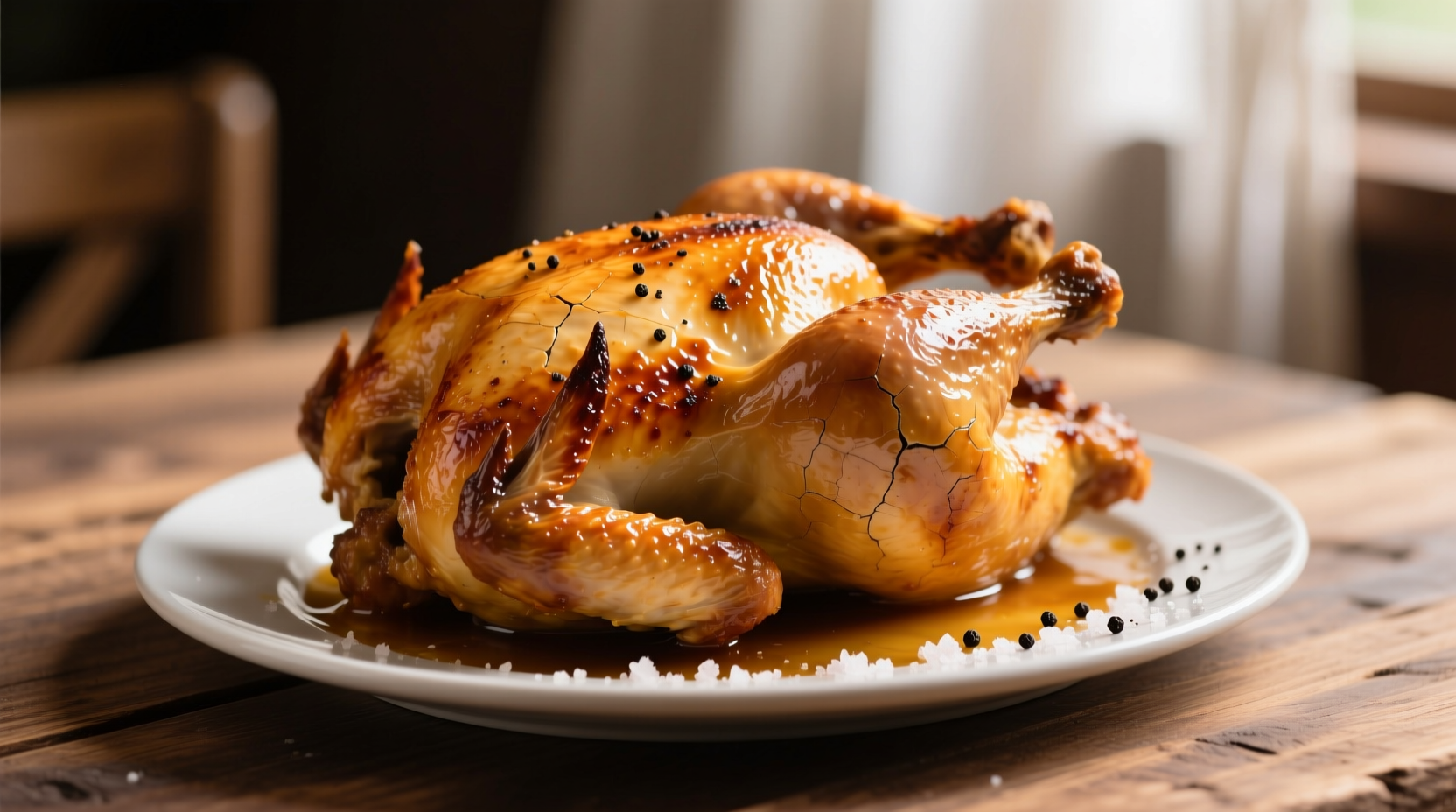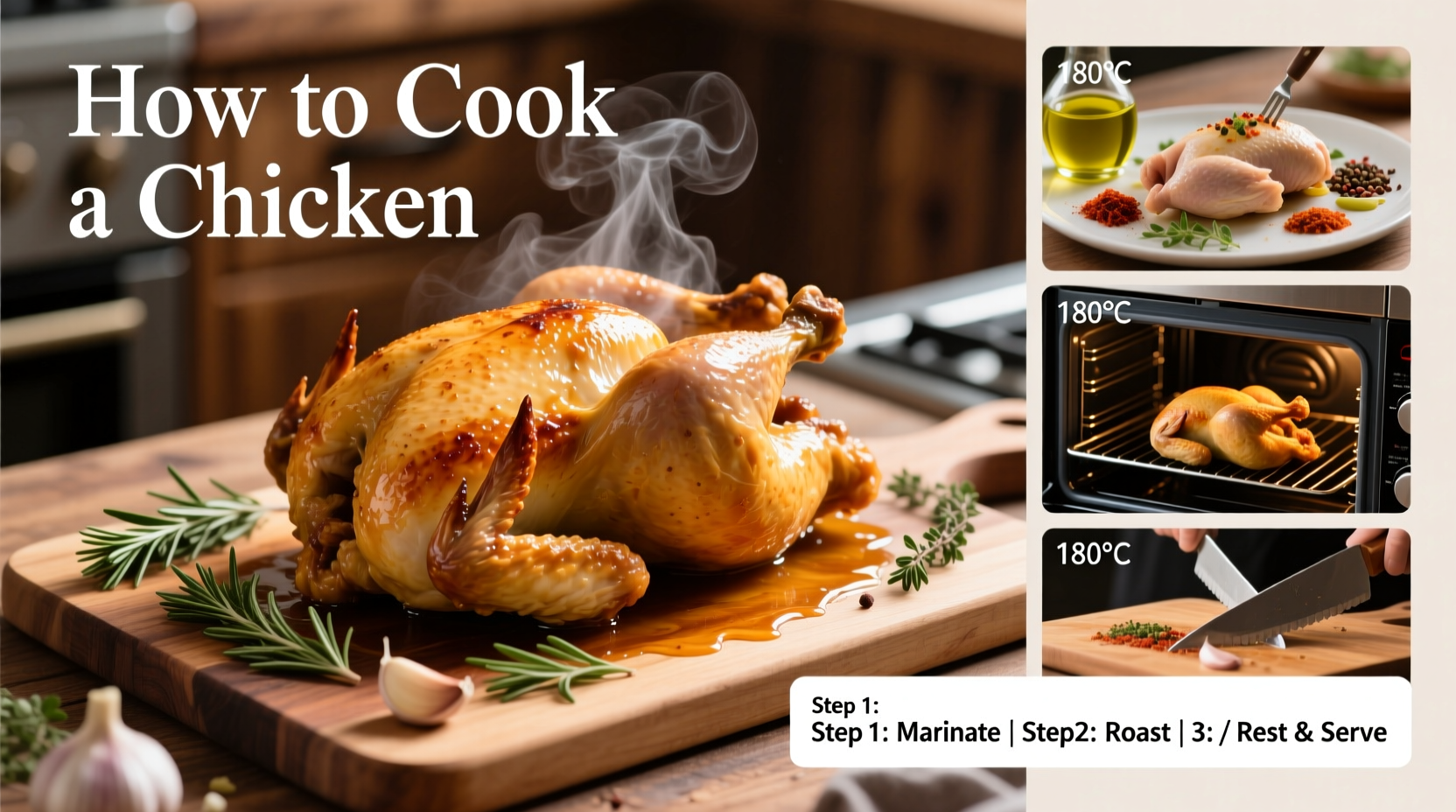Learning how to cook a chicken properly transforms this everyday protein into a restaurant-quality meal. Whether you're a beginner or experienced cook, understanding the science behind moisture retention and proper temperature control makes all the difference. This comprehensive guide covers every aspect of chicken preparation, from selecting the best bird to achieving that perfect golden-brown skin while keeping the meat succulent.
Essential Chicken Preparation Checklist
Before you start cooking chicken, proper preparation sets the foundation for success. Many home cooks skip these critical steps, leading to dry or unevenly cooked results. Follow this professional checklist:
- Thawing properly - Never cook frozen chicken. Thaw in the refrigerator for 24 hours per 4-5 pounds
- Drying the surface - Pat chicken thoroughly with paper towels for better browning
- Temperature equalization - Let chicken sit at room temperature for 30 minutes before cooking
- Seasoning timing - Salt at least 45 minutes before cooking for deeper flavor penetration
| Chicken Type | Recommended Thaw Time | Room Temperature Rest |
|---|---|---|
| Whole chicken (3-4 lbs) | 24 hours | 30 minutes |
| Bone-in breasts (1.5 lbs) | 12 hours | 20 minutes |
| Boneless breasts (1 lb) | 8 hours | 15 minutes |
| Thighs/legs (2 lbs) | 12 hours | 20 minutes |
This preparation timeline comes from the USDA Food Safety and Inspection Service, ensuring food safety while optimizing texture. Proper thawing prevents uneven cooking and potential bacterial growth in the "danger zone" between 40°F and 140°F.
Mastering Chicken Cooking Methods
Understanding how to cook a whole chicken versus specific cuts determines your method selection. Each technique has distinct advantages depending on your equipment and desired outcome.
Oven Roasting: The Foolproof Method
Roasting delivers evenly cooked chicken with minimal hands-on time. Follow these steps for perfect results:
- Preheat oven to 425°F with rack in the center position
- Season chicken inside and out with salt, pepper, and herbs
- Place on a rack in a roasting pan (or directly on vegetables)
- Cook for 15 minutes at 425°F, then reduce to 375°F
- Calculate cooking time: 20 minutes per pound plus 15 minutes
- Insert thermometer into thickest part of thigh (avoiding bone)
- Remove at 160°F and let rest for 10-15 minutes
The critical food safety standard comes from the CDC's food safety guidelines - chicken must reach 165°F internal temperature to eliminate harmful bacteria like salmonella. The 5-degree buffer during cooking accounts for temperature rise during resting.
Pan-Searing: Restaurant-Quality Results at Home
This technique creates incredible flavor through the Maillard reaction. For bone-in chicken breasts or thighs:
- Use a heavy skillet (cast iron or stainless steel)
- Heat oil until shimmering but not smoking
- Place chicken skin-side down with proper spacing
- Cook undisturbed for 6-8 minutes until golden brown
- Flip and finish in 375°F oven for 10-15 minutes
- Check temperature in thickest part (165°F)

Achieving Maximum Flavor: Beyond Basic Seasoning
Professional chefs use these flavor-enhancing techniques that transform ordinary chicken into extraordinary meals:
Dry Brining Science
Rubbing salt under the skin 12-24 hours before cooking draws out moisture, dissolves the salt, then reabsorbs it for deeply seasoned, moist meat. This method, validated by Culinary Institute research, improves texture while reducing cooking time.
Marinade Timing Guidelines
Acid-based marinades (with citrus or vinegar) should only contact chicken for 2-4 hours. Longer exposure breaks down proteins too much, creating a mealy texture. For best results:
- Oil-based marinades: 4-12 hours
- Yogurt-based marinades: 4-24 hours
- Acid-based marinades: 2-4 hours maximum
Troubleshooting Common Chicken Problems
Even experienced cooks encounter these issues. Here's how to fix them:
Dry Chicken Fix
If your chicken turned out dry, try these solutions:
- Rest properly: 10-15 minutes for breasts, 20-30 for whole birds
- Slice against the grain for maximum tenderness
- Moisten with pan juices or a simple sauce
- Store leftovers with broth to maintain moisture
Undercooked Chicken Recovery
If you discover undercooked chicken after serving:
- Return to oven at 350°F until reaching 165°F
- Use a meat thermometer to check multiple spots
- Cover with foil to prevent over-browning
- Never serve chicken below 165°F internal temperature
Proper Storage and Leftover Safety
Understanding how to store cooked chicken prevents foodborne illness. According to the FDA Food Code, follow these guidelines:
- Cool quickly: Divide large portions into shallow containers
- Refrigerate within 2 hours (1 hour if room temperature exceeds 90°F)
- Store in airtight containers for 3-4 days
- Freeze for up to 4 months for best quality
- Reheat to 165°F internal temperature
When reheating chicken, adding a splash of broth or water prevents drying. For grilled chicken, wrapping in foil during reheating preserves moisture better than microwave methods.
Perfect Chicken Every Time: Final Tips
Professional results come from understanding these final principles:
- Always use a digital thermometer - visual cues alone are unreliable
- Resting time is non-negotiable for juicy results
- Salt early for better flavor penetration
- Don't overcrowd the pan for proper browning
- Let chicken come to room temperature before cooking
Mastering how to cook a chicken transforms this everyday protein into a centerpiece meal. By following these science-backed techniques, you'll consistently produce juicy, flavorful chicken that rivals restaurant quality. The key is understanding temperature control, proper preparation, and timing - not complicated equipment or rare ingredients.











 浙公网安备
33010002000092号
浙公网安备
33010002000092号 浙B2-20120091-4
浙B2-20120091-4